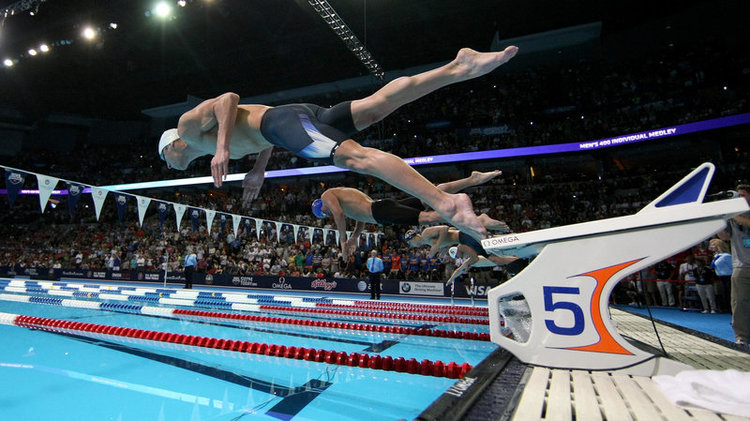How You Move Your Arm Says Something About Who You Are
When Olympic swimmer Michael Phelps steps onto a starting block a few days from now, a Stanford scientist named Krishna Shenoy will be asking himself a question: “What’s going on in Michael Phelps’ brain?” Jon Hamilton writes for NPR, July 19, 2012.

Specifically, Shenoy would like to know what’s happening in an area called the premotor cortex. This area doesn’t directly tell muscles what to do. But it’s the place where the brain gears up for something the body is about to do, like swimming.
In recent years, scientists who study the premotor cortex have found evidence that what it does can be quite complex. And a study just published in the journal Science suggests this part of the brain is involved in planning and strategy, and may even reflect a person’s personality.
The premotor cortex isn’t important for involuntary movements, like what we do when we accidentally touch a hot stove, Shenoy says. But it’s critical for voluntary movements, especially complicated ones like the moving of your arms and legs in a way that carries you swiftly through the water, he says.
The premotor cortex allows us to “consciously visualize a great performance as a way to prepare for an event,” says Donald Crammond of the University of Pittsburgh Medical Center.
While scientists can only speculate about what’ happening to individual brain cells in people, Daniel Moran and Thomas Pearce did an experiment at Washington University in St. Louis and were able to monitor the activity of brain cells in two monkeys playing a virtual reality game.
The game offered the monkeys an unobstructed path to the target, or place an obstacle in their way, which required them to think of a way to reach around the obstacle.
When the monkeys saw an obstacle, their brain cells began to keep track of much more information, Moran says. Instead of just remembering simple things like which direction to reach, the cells got involved in higher level questions like what the larger goal was and which strategy was most likely to achieve that goal.
“The more difficult it got, the more information the neurons would encode,” Moran says.
That was one important finding. But the study also suggested something remarkable: activity in the premotor cortex reflected each monkey’s personality.
They found in training that one monkey was clearly more impulsive and a bit hyperactive while the other was more patient and deliberate. “The patient monkey waited until all the information was known to him in order to form a plan,” Pearce says. “The impatient monkey on the other hand planned on moving straight to the target as soon as the target showed up on the screen and only later would change his plan if the obstacle got in the way.” Based on their personality and preferences through their physical actions and perceptions, the monkeys made decisions about how to achieve their goal.
In SMALLab embodied learning environments, students watch peers perform and they then begin to anticipate the time when they must get up and perform the action, when they do this the presumption is they are also activating premotor planning cortical areas. Our content is designed to activate more neuronal sensorimotors areas compared to regular content, without a performative aspect, we hypothesis this is one of the reasons we see such significant gains in learning.

